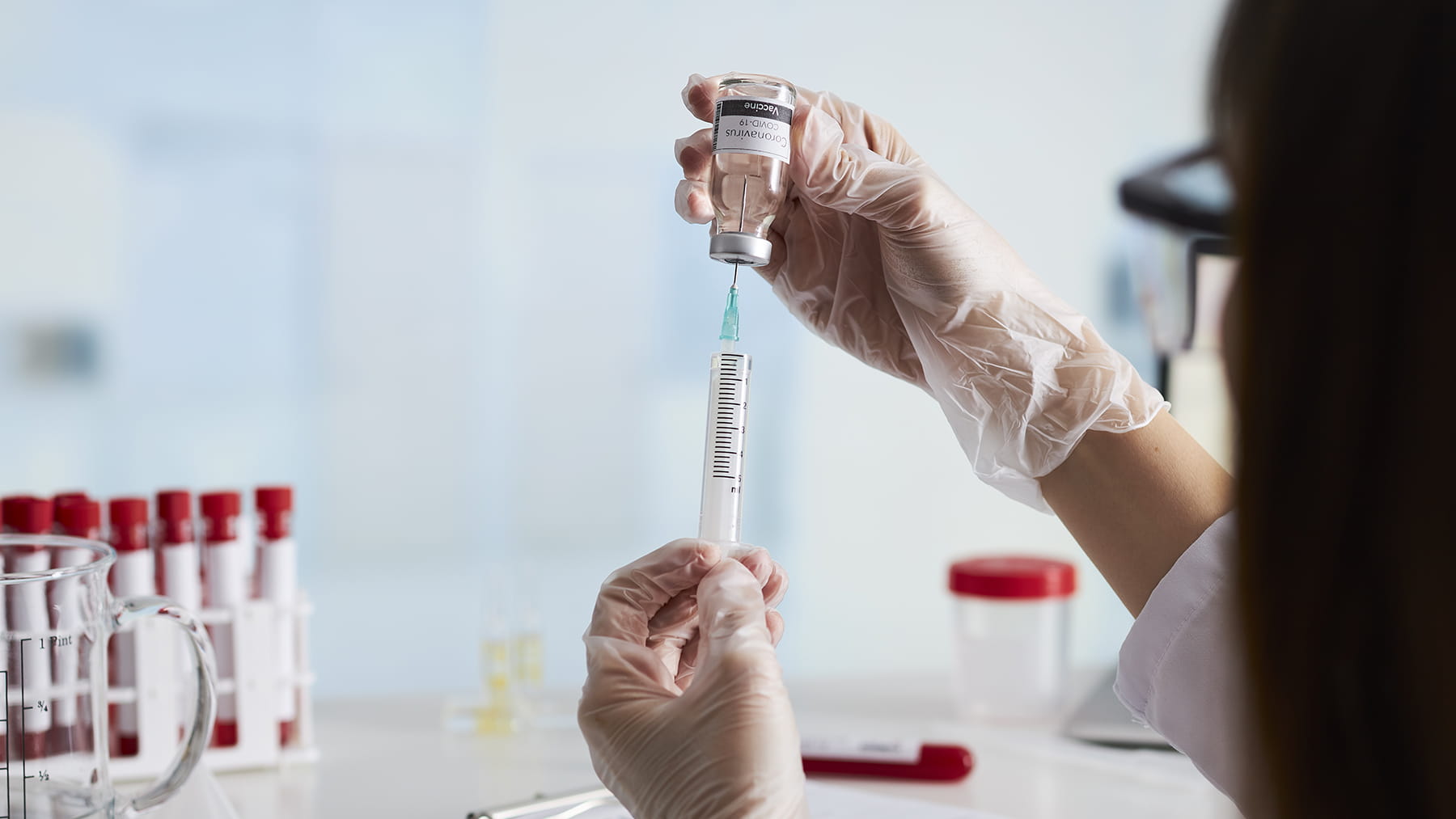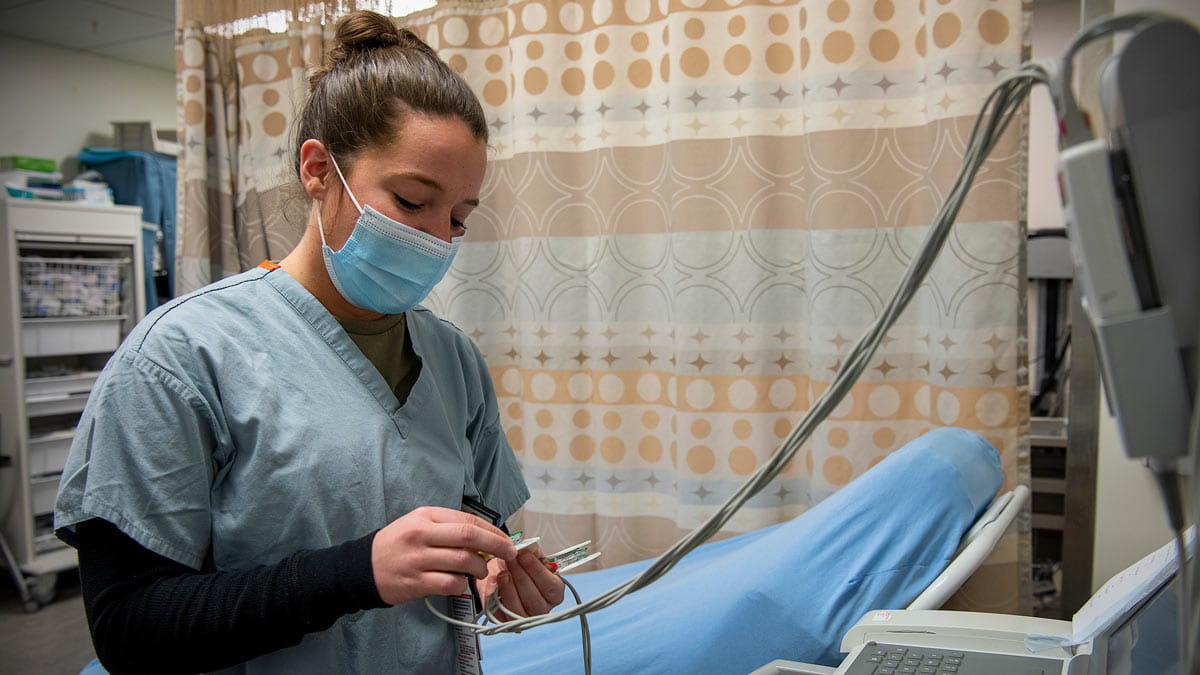What we know about COVID-19 vaccines right now

On Aug. 23, 2021, the U.S. Food and Drug Administration approved the Pfizer COVID-19 vaccine for the prevention of COVID-19 disease in people 16 and older. As what we know about COVID-19 evolves, so could the information contained in this story. Find our most recent COVID-19 blog posts here.
During the COVID-19 pandemic, vaccine creation is moving faster than ever. The typical timeline for developing and testing vaccines takes years—sometimes decades—but because of the pressing need for a COVID-19 vaccine to help control this pandemic, the government, pharmaceutical companies and the scientific community are dedicating enormous resources to developing effective vaccines as soon as possible.
Here’s what we know right now about how these vaccines could work and how long it may take before they reach the public:
How close are we to having a COVID-19 vaccine for the public?
Current vaccine trials look promising in terms of being effective—we’ve recently learned that some are 95% or more effective at preventing COVID-19—but there’s still a lot to be learned.
It’s likely that within the next one to two weeks, the Food and Drug Administration (FDA) will review the currently available data on the vaccines being tested. If the data shows that preliminary reports of high effectiveness and that the benefits outweigh potential risks, then they likely will issue an emergency use authorization (EUA) to get it to people faster than usual FDA approval processes.
EUAs typically have stipulations about who should receive the vaccine, but those stipulations haven’t been released yet. The consensus among experts is that initial distribution of the vaccine likely will be to first responders and frontline health care providers, since they’re at higher risk of exposure.
As more of the vaccine is made, distribution will widen—likely to high-risk groups who pose the greatest risk of developing severe symptoms if they were to contract COVID-19.
From the information we currently have, it looks like an approved COVID-19 vaccine may be available to the general public in mid-2021. It’s unlikely the vaccine would be available to the wider population before then.
How does a COVID-19 vaccine work? Does it give you COVID-19?
No, a COVID-19 vaccine does not give someone the actual, live COVID-19 virus.
Basically, the way all vaccines work is that they try to get the body to produce antibodies to a specific pathogen. Sometimes that pathogen is a virus itself—for example, measles, mumps and rubella are all “live” virus vaccines, which means that those viruses have been modified so that the body recognizes them, but they shouldn’t actually cause disease.
Some vaccines use just part of the organism—for example, hepatitis B vaccines use just a “manufactured” surface antigen and not the whole virus to create antibodies.
All COVID-19 vaccines currently being tested use the “spike protein” from the virus, which attaches to receptors in the body. The idea is that this will trigger an immune response and help the body develop antibodies to protect against the actual virus.
How do we know that the vaccine is safe when the timeline has been so shortened?
The processes for vaccine development follow standard phases. It’s important to know that phases have not been skipped, but rather have been compressed in an effort to have as rapid a response as possible, but safety continues to be paramount.
The process doesn’t cut corners—it has just been accelerated and, in some ways, expanded. For example, having larger numbers of people participating in each trial (30,000 to 40,000 participants each) allows scientists to accumulate data much more quickly than usual.
The trials also are following the FDA’s strict, rigorous standards, and an independent group, called a data safety monitoring board, reviews the vaccine trial data before a vaccine can reach the public.
Here at Ohio State, we’re currently enrolling participants in a trial for a vaccine co-developed by the University of Oxford and the biopharmaceutical company AstraZeneca. It’s just one of many important COVID-19 clinical trials happening at Ohio State that allow us to develop treatments for patients at all stages of the disease.
As the principal investigator of this vaccine trial, I can tell you that time is of the essence, which is why we’re one of multiple sites gathering data on this vaccine. We hope to recruit about 500 adults for this randomized, double-blind and placebo controlled trial. Randomized means by chance (like picking a number out of a hat); in this trial, participants have a 2 in 3 chance to receive the active vaccine and a 1 in 3 chance to receive placebo.
We’re especially hoping to recruit a diverse group of participants who are at higher risk of exposure, such as teachers, first responders, college students, factory workers, restaurant employees and those age 65 or older.
To enroll in our COVID-19 vaccine trial, visit go.osu.edu/covidvaccine.
Susan Koletar is director of the Division of Infectious Diseases at The Ohio State University Wexner Medical Center and a professor at the Ohio State College of Medicine.




